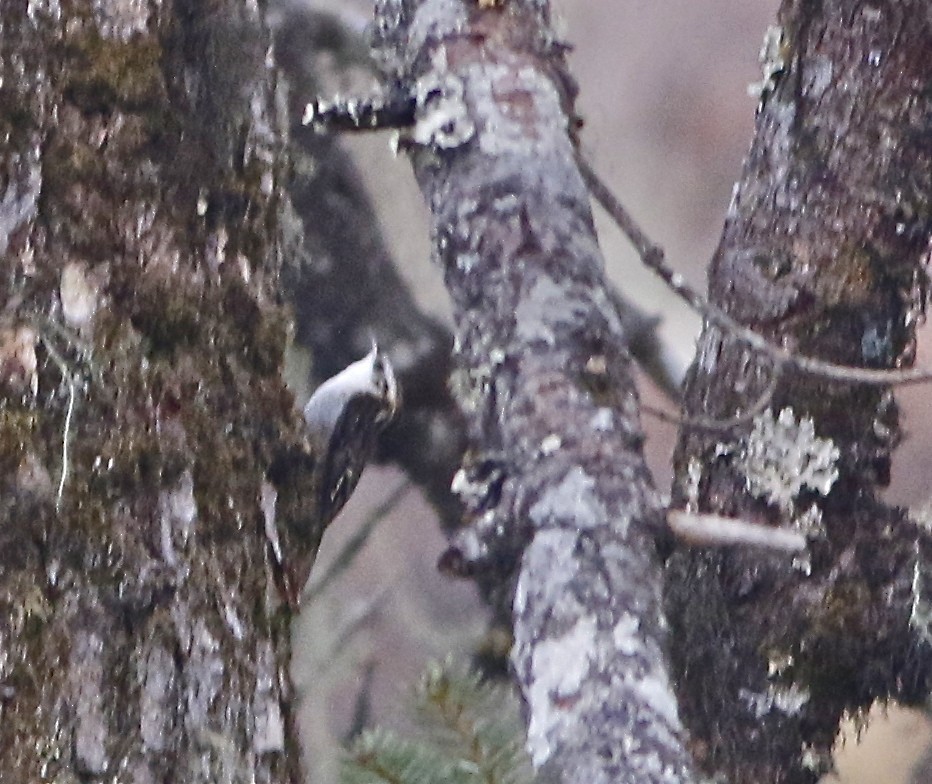Hodgson's Treecreeper
A species of Typical Treecreepers Scientific name : Certhia hodgsoni Genus : Typical Treecreepers
Hodgson's Treecreeper, A species of Typical Treecreepers
Botanical name: Certhia hodgsoni
Genus: Typical Treecreepers
Content
Description General Info
 Photo By Don Roberson
Photo By Don Roberson Description
This is a small bird, 12.5 cm (4.9 in) long, of fairly drab appearance. It is brownish with lighter and darker streaks above, and off-white below and on the supercilium. It is browner above than the common treecreeper (C. familiaris), with a contrasting rufous rump. It has a long curved bill and long stiff tail feathers. The song starts with two of the shree calls characteristic for this species and its close relatives. Then follow one or a few warbling calls, and finally (usually) two up- and downslurring notes. Each sound is about 0.3 seconds long, and the whole song takes about 2 to 2.5 seconds. It drops in pitch at a constant rate from around 7.5 kHz initially to 6 kHz, slurring down to 4 kHz once or twice in the end. 
Size
12 cm
Nest Placement
Tree
Feeding Habits
Hodgson's Treecreeper primarily consumes small arthropods. It forages by hopping up trees in a spiral pattern and repeats this after flying to another tree's base. Occasionally forages on mossy rocks and may join mixed-species flocks.
Habitat
Hodgson's Treecreeper typically inhabits high-altitude coniferous woodlands, frequently mixed with rhododendrons, birch, or oak. During winter, some populations may move to lower mixed oak-rhododendron woodlands. This species favors environments rich in trees that support its climbing and foraging behavior. The broader geographical regions encompass parts of the Himalayas and surrounding mountainous areas in Asia.
Dite type
Insectivorous
General Info
Feeding Habits
Bird food type
Distribution Area
Hodgson's treecreeper is found in the countries of Bhutan, China, India, Myanmar, Nepal and Pakistan. It inhabits temperate to cool tropical montane forests. Mostly resident in coniferous woodlands, it may move downhill to oak/rhododendron woodlands in winter. However, in Bhutan for example C. h. mandellii is not uncommon all year round in moist Bhutan fir (Abies densa) forests between approximately 3,000 and 4,000 meters ASL. The stiff tail feathers enable the bird to creep up vertical tree trunks looking for arthropod prey. It nests in tree crevices, and 4–6 reddish-brown blotched pinkish-white eggs are the typical clutch size. Although the stretched-out range of this rather sedentary species is prone to habitat fragmentation in the long run, C. hodgsoni is just as common as its northern relatives. The IUCN therefore considers it a Species of least concern. 

 Photo By Don Roberson
Photo By Don Roberson Scientific Classification
Phylum
Chordates Class
Birds Order
Perching birds Family
Treecreepers Genus
Typical Treecreepers Species
Hodgson's Treecreeper